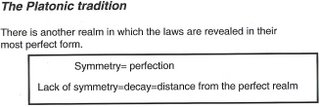Murray Gellman: On Plectics
It is appropriate that plectics refers to entanglement or the lack thereof, since entanglement is a key feature of the way complexity arises out of simplicity, making our subject worth studying.
I was talking about some things in terms of the computerization that had gone to another level in perspective(gravitational entanglement). It was about how "technologies can change" while we had been held to a certain kind of thinking. While the limitations held us too, "not knowing what computerization may bring."
IN regards to the Landscape
It was important to understand why there would be such divergences in perspective and how these would be lined up? Some of course did not want to take the time, but it was important to me to understand the "philosophical position" taken.
One could just as well venture to the condense matter theorist and said, what building blocks shall we use? One should not think the "history of Platonism" without some "other influences" to consider. Least you assign it to a "another particular subject" in it's present incarnation? An Oscillatory String Universe?
So the evolution here is much more then the "circumspect of the biological function," but may possible include other things that have not been considered?
Physiologically, the "biological function" had some other relation? So abstract that I assigned the photon? So I said "feelings," while Einstein might assigned them to a "short or long time" considering his state of mind? :)
More thought of course here on the "fictional presentation" submitted previous. As a layman I have a problem in that regard. :)
Who would have ever thought that such "concepts that moved from my mind had some relation to the world at large in our emotive consequences?" That from such thinking, I would adopt fictional perspective to help me deal with what the advancements may be in the computerized world?
I already had to know of the development in terms of entanglement's issues, to move it one step further not only in my thinking, but in understanding that as you adopt model apprehensions, how shall these lead you to conclude that the physics in association, had some relevance to it.
The cosmologist may say that indeed the gravitational consequences and waves have as yet to be considered, but, if held to the photon in it's affect in such a gravitational field, then what would we want from such a graviton condensation?
It's colouring?
So of course it is appropriate that I show you the comment I made above, and then you judge for your self the thought I held in fiction, in relation to this article below as I am making that statement.
 Lene Hau explains how she stops light in one place then retrieves and speeds it up in a completely separate place.
Lene Hau explains how she stops light in one place then retrieves and speeds it up in a completely separate place.Staff photo Justin Ide/Harvard News Office
Atoms at room temperature move in a random, chaotic way. But when chilled in a vacuum to about 460 degrees below zero Fahrenheit, under certain conditions millions of atoms lock together and behave as a single mass. When a laser beam enters such a condensate, the light leaves an imprint on a portion of the atoms. That imprint moves like a wave through the cloud and exits at a speed of about 700 feet per hour. This wave of matter will keep going and enter another nearby ultracold condensate. That's how light moves darkly from one cloud to another in Hau's laboratory.
This invisible wave of matter keeps going unless it's stopped in the second cloud with another laser beam, after which it can be revived as light again.
Atoms in matter waves exist in slightly different energy levels and states than atoms in the clouds they move through. These energy states match the shape and phase of the original light pulse. To make a long story short, information in this form can be made absolutely tamper proof. Personal information would be perfectly safe.


No comments:
Post a Comment